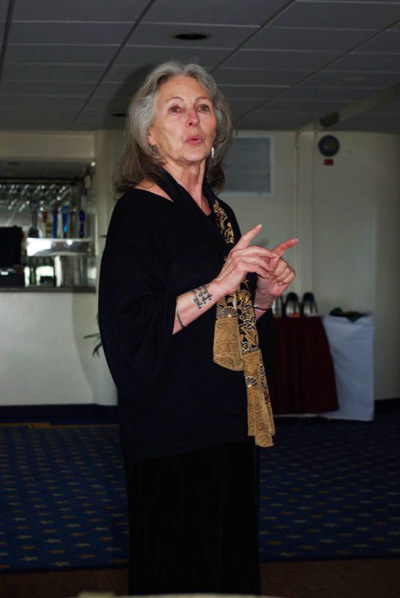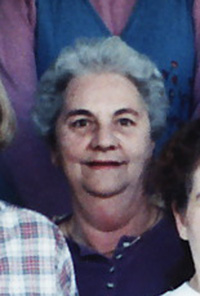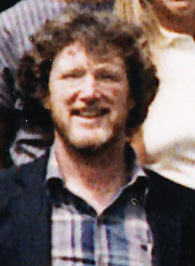Two Eras of CCV—Alison Kirk former Academic Coordinator
I perhaps have an unusual experience of CCV in that I worked for the college twice, twenty years apart, from 1986 to 1988 and from 2006 to 2009. At the start of my second “term” as a Middlebury coordinator, people often said, possibly viewing me as an awakening Rip van Winkle, “I bet you think the college has changed a lot,” to which I would reply, “It has and it hasn’t.”
I look forward to reading what the contributors to this document who were with CCV from its beginnings have to say. But when I interviewed for my first time as Middlebury coordinator (then called a “Coordinator of Instruction and Advisement,” or “CIA”), the tradition of the “wild west” days of the college in the early ‘70s, when classes often met in church basements and with coordinators feeling like rugged pioneers, strongly lived on in the culture. At the same time, I came to see the period of my first tenure in the ‘80s as a time when there was a drive to centralize and standardize the operations of the college, occasionally with some resistance from coordinators used to carving out their own terrain.
With the exception of Montpelier, Brattleboro, Winooski, and St. Albans, a CIA in those days was what my sister-in-law calls the “Lone Arranger.” Eight of the sites had only one coordinator who did everything –the things coordinators do today, plus all the advertising, student recruiting, a lot of outreach, and, until we were rescued, I believe in the spring of 1988, the financial aid advising. There was no opportunity for solitary coordinators to specialize. Like many others, I enjoyed the creative aspects of the job as much as I enjoyed working with the students. We wrote (clever) radio and print ads, designed brochures and posters, and wrote newspaper articles – without anyone checking on their quality or expressing concern that the college didn’t have a uniform image or brand. I remember a meeting in Burlington when coordinators from several sites in the Western Region met with some people from an advertising agency about having uniform, professionally-produced ads. Some of us felt like something was being taken away from us. When I returned as coordinator in 2007 and found out that that whole function was centralized, I was relieved to feel less responsible!
With so many “Lone Arrangers” at the sites, committee, coordinator, and regional meetings were especially welcome. Then, as now, the people who work at CCV were a remarkably enjoyable group – good-spirited, funny, sharp, and generous in sentiment. I always appreciated not only the comfort of seeing I was not alone in the kinds of challenges presenting themselves (and picking up good ideas from other coordinators), but I greatly appreciated the restorative element of play. I’ll never forget the totally unexpected eruption into a regional meeting of Maryellen Lowe and one or two others whose names I forget as the “Dancing Raisins,” complete with the costumes and music of the television commercial. It was hilarious. I don’t think that spirit has much changed, but will add that in my second “tenure,” I did feel the reduction in face-to-face meetings as a loss, however commendable the environmental reasons for the change.
As I hinted above, meetings in the mid-80s also gave us an opportunity to kvetch about a lessening of our local autonomy. One coordinator once said in a regional meeting, “I always hate it when administrators and staff in Waterbury refer to us as ‘field staff,’ as though we are nothing but little worker ants serving the central office.” Conveniently, Donna Welch, Coordinator of College Relations, sent out a memo to “field staff” shortly afterward that had some clipart at the bottom of the page of six nineteenth-century agrarian workers, plying their scythes to a hayfield. I copied it for the offices in the Western Region and labeled it “Field Staff,” adding the caption, “Heigh ho, heigh ho. It’s off to work we go!” Of course, I also labeled each of the figures for one of the six offices in the region.
The Middlebury site was starting only its fourth semester of existence in 1986 when I came in, a week or so before registration started and after a summer of no advertising during the gap between coordinators. In a small new site, it felt to some extent like we were creating something completely new each semester, guessing at a good balance of courses in rather uncharted waters, recruiting instructors ($500 per course, which was still a big advance over the volunteer force when the college started), trying to round up students, trying to persuade “old” students to return, trying to persuade students to take an alternative course instead of just getting a refund if the one they’d signed up for was canceled, and so on. (Yes, some of this hasn’t changed.) For some reason, at least in Middlebury, we occasionally pitched courses to the lifelong learner population. Bette Matkowski, the first Middlebury coordinator, successfully ran one or two semesters of Arabic. I got approval for one semester of Dairy Herd Management, our first successful daytime class, which actually filled to capacity and was probably never offered again. It’s hard to imagine how such courses would serve the core CCV population and mission today!
In many ways, of course, the college has become much more “traditional” than when I was first here. Back then, students needed to request having letter grades instead of merely a Pass or an NP, meaning that they didn’t receive credit because they hadn’t demonstrated the required learning. Like other of the idealists, I was always disappointed that virtually all the students requested old-fashioned letter grades. I still love the ideal but have to say again that the present system serves our mission and population far better. Similarly, in the manner of the saucy, upstart college we were, CCV’s promotional literature included a “Campus Map,” which was simply a map of the state of Vermont with the twelve sites and Waterbury pinpointed. The joke was we had no traditional campus. We were proud of owning no buildings and investing what resources we had into the students.
The Middlebury site, then as now (2013), was a few rooms on the second floor of the Battell Building, the wonderful old Victorian brick structure at the corner of Main Street and Merchants’ Row. Our first site office consisted of two very dark adjacent rooms that felt like lawyers’ offices and seemed as though they should smell of ancient cigar smoke. In spring of my first year (1987), Tim Donovan, then Director of the Western Region, negotiated to move the office to the magnificent large corner room – magnificent because part of it was in the round “tower” of the building, projecting out over Middlebury’s main intersection.
For that round space, symbolic to my literary mind, I had a vision, and strongly resisted any scheme that involved cutting it up, partitioning it off, or converting it into a private office. The space, I thought, could make the point that the students are the center of the college. Gail Knapp, our wonderful Site Office Manager, and I had the books for what in some bigger sites was a “Resource Room” in book cases around the perimeter of the circle and a round table with chairs on a round rug in the center. This, literally and figuratively, was our Student Center, a place for students to hang around or study. The rest of the large room was open, warm, airy, and light, thanks to the large windows.
We had an open house to inaugurate the new space. Toward the end of the event, Tim said to me, glancing around the space, “Now all we have to do is get enough students to pay for it.” He could see from the look on my face the pall that remark had cast over the occasion. The pressure to build enrollment felt extreme, and when a year later, my future husband got a job out of state, I was not altogether sad to have a reason to move on, despite my love of the college and enjoyment of much of the job.
When we moved back to Vermont twenty years after I’d last started at CCV, I signed up to teach Introduction to College Studies and to serve as tutor and the library resource person for Middlebury’s rather homeless learning center. As I said, I found the college at core the same, though different in a multitude of particulars. I knew from my first ICS meeting that the collective personality of CCV people was the same. I also learned that the average age of our students was dropping, though to me the obstacles they faced were the same ones I was used to. (Besides, I’d also worked a lot with adolescents and “traditional” age college students elsewhere.) One big difference was the number of leadership positions and opportunities distributed throughout the college. In the ‘80s, a coordinator friend of mine had described CCV as having a very flat organization, meaning to her that there were not enough opportunities for advancement. This is definitely no longer the case as far as I can see. Indeed, occasionally it might seem there are too many chiefs, but on the whole I see the opportunities for recognition and capitalizing on expertise in a particular domain as a positive. Other differences, of course, for me were the numerous new rules and procedures, all the technological tools, which sometimes seemed like the tail wagging the dog, and the overall acceptance and recognition across the state of the college, with its many stately sites. (No more “campus map” jokes!)
As for the Middlebury site itself, it had gone through many vicissitudes since I was last there. This is a history that others can best describe. I understand that there was a time when it was an active administrative hub with a large staff, given the size of the site. This is when my beloved open space and “student center” in the office were indeed partitioned off and carved into offices, making the present entrance, to my eye, considerably less inviting. There was also a time (sorry I can’t say when) when there was talk of shutting the site down because of low enrollment and a high rate of course cancellations. I’ve heard Tim Donovan credited as being the one committed to the site, who created the brilliant concept of making it a “portal site,” offering only courses to meet the general education requirements. Liberal Studies was the only degree Addison County residents who didn’t want to go north, south, or online could get there. Finally, to rebuild public confidence in the site, all Middlebury courses were “guaranteed to run” – no cancellations! This ‘reinvention’ of the site gave rise to the mantra, “Middlebury is different” in college meetings. And as lone coordinator, Diane Herman-Artim did a masterful job of designing a rotation system of offering a small number of courses that would serve the goals of the site. There were still only three classrooms that limited the size of enrollment, though a large number of students registered there each semester to enroll elsewhere. Middlebury became reliable, efficient, and risk averse; the days of Arabic and Dairy Herd Management were long gone.
Yet another change occurred the year of my return (2006). Diane’s position changed from solitary site coordinator to half-time Middlebury and half-time online coordinator. The first year the resulting gap was filled by a new half-time site coordinator, and the following year when she left, I was honored to be let back in to my “old” job, thankful not to return to carrying the full weight by myself.
As a half-time person, I was the student services, writing/basic skills, humanities, and social science coordinator. I worked on giving greater visibility and availability to the “Learning Center” services, extending its hours of operation by staffing it myself from 6 to 7 pm (I use quotes because the center didn’t have its own room; it was a sign that moved around the hallway depending on what space was available). I also worked on building an environment that would be more appealing to younger, full-time students. With the help of a particularly good succession of Student Advisory Board members, I encroached on the public hallway of the Battell Building – amazing that no one complained – and set up display tables on various themes or college events along with a bowl of popcorn and apples. I did this nightly at three-week intervals. The idea was to create a “place,” an unofficial student center, where students could socialize and get to know each other better. The SAB took responsibility for providing coffee and overseeing a collection system for the coffee pot, an effort that was quite successful and appreciated despite the trepidations of some staff members over this daring innovation. In general, creating a warmer, more inviting environment was one of my “soft,” unmeasureable goals.
On a more concrete level, I advocated initiating summer courses, beginning with Introduction to College Studies and then moving on to Access to Success. I also urged the idea that the time was right demographically to restart day classes (I’d experimented some with that ‘way back’). I’m proud to say these are now part of the site’s offerings. At the same time – though I hasten to add I had nothing to do with this – toward the end of my second tenure, the “no cancellation” policy slipped quietly off the advertising, and Regional Director Dee Staffan urged us to offer a “wild card” course each semester and to begin to try some program-specific courses along with the general education requirements. Middlebury seemed to be becoming a little less “different” in ways I thought were exciting and good.
Since I retired, of course, I continue to encounter CCV students and faculty members around town. Two examples of students might sum up my experience of the college. One woman was an outstanding student (and SAB member) who, thanks to CCV, along with her ability and persistence, has earned her B.S. degree and has gone from working as a cook in an elementary school to being a well-respected and well compensated IT professional at B.F. Goodrich (now United Technologies Corporation) in Vergennes. Last time I caught up with her, she was happy and effusive, well dressed, and sporting a professional-looking hair style. The other is a former student I regularly see rounding up carts in Hannaford’s parking lot. She always accosts me by name and tells me about the latest events in her life. She recently had an opportunity to be promoted as check-out person, but it just “wasn’t her thing.” I told her, “No one is good at everything,” and she agreed. The fact that she didn’t ever make it past the basic skills courses at CCV has in no way dimmed her sense of connection with the college as a place where she was valued. I’m very glad to have been a part of that.





